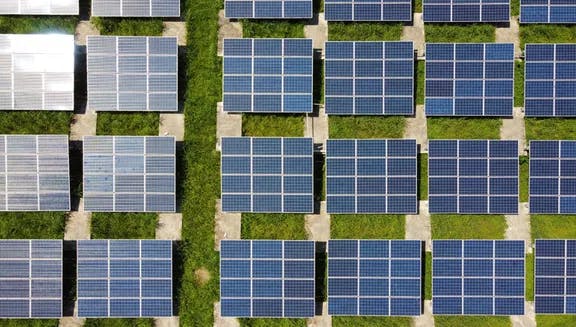
Where are they now: decommissioning old wind-turbines
The lifespan of wind turbines
As the push for renewable energy intensifies, wind farms are expanding rapidly to meet sustainability goals. However, according to Smart Port and TNO, many Dutch wind turbines will reach the end of their lifespan in the coming decade. Wind turbines are designed to operate safely for about 20-25 years with regular maintenance to create longevity. While technological advancements continue, newer, more modern turbines will have a lifespan of around 35 years.
Deciding whether to extend the life of wind turbines, upgrade them, or decommission them depends on technical, economic, and regulatory factors. Beyond checking if the turbines can technically run longer, it's essential to consider their profitability. As components wear out, they require more frequent maintenance, leading to more downtime and higher costs.
Currently, the main end-of-life solutions include lifetime extension, which is ideal if the turbine can be updated and not removed. Removal can disrupt ecosystems and means less wind power and less chance to reach net zero goals. Repowering is another viable option, replacing parts of the turbine and tech to create a longer life span and decommissioning. Once decommissioned, part of the turbine can start the next journey, which is, in the best-case scenario, recycling or upcycling and, worst case, landfill or incineration.
Decommissioned: now what? Repurpose, recycle, refurbish or landfill?

There are multiple options thereafter for decommissioned wind turbines. If still in good condition, turbines can be resold to other wind farm companies for continued use. Those needing repair may be refurbished for resale. If there is no buyer for the complete turbine, spare parts could also be sold separately. Any remaining components might be repurposed, such as for making bridges, or they could be recycled, incinerated, or landfilled if not sold on the secondhand market.
Today, the majority of a wind turbine's total mass can be recycled, especially the metal. Most components, such as the foundation, tower, and parts within the nacelle (which houses critical components like the gearbox and generator), have established recycling practices. Recycling turbine blades is the most challenging due to their strong composite materials—reinforced plastic, fibreglass, and balsa wood—that are difficult and costly to dismantle.
In contrast, metals like steel, copper, and electronic parts are easily recycled. However, turbine blades often end up with lower-quality recycled products, limiting their usefulness. Chris Slootweg from the UvA is tackling this exact problem - understanding that using resources in a linear way, similar to fossil fuels, will create waste from various chemical elements, not just carbon. This approach is unsustainable.
Effective policies and regulations are crucial for promoting sustainable turbine decommissioning practices, encouraging advancements in recycling and repurposing efforts, and making the separation of blade materials cost-competitive and economically viable.
Finding new uses for old turbine blades

Efforts are currently being made to enhance recycling technologies and create more effective disposal methods to reduce reliance on landfills. In 2021, the European Wind Industry called for a ban across Europe on landfilling decommissioned wind turbine blades by 2025. The Netherlands already has bans on landfilling composites, which includes wind turbine blades—leaving incineration as the last resort.
The Dutch are getting creative with turning turbine blades into building materials or using them for creative projects. They're even being transformed into playgrounds, shelters, and unique architectural designs. These smaller projects have the potential to be scalable and therefore could be part of the solution to the decommissioning challenges. However, to make this possible, repurposing needs to always be considered as the first viable option.
The team at Blade–Made, are working on larger-scale applications for (almost) entire blades, such as sound barriers and building facades. This serves as the blades 'first' second life; subsequently, they can be repurposed into playgrounds or urban furniture. Even when recyclable blades are available, it is environmentally preferable to repurpose them first and recycle only after their secondary use.
Dutch companies TNO, Siemens Gamesa, and Vestas are working on making fully recyclable turbine blade designs. Meanwhile, Vattenfall is on a mission to recycle all old turbine blades by 2030, aiming to hit the 50% mark by 2025. Blades from the Dutch Wind farm Irene Vorrink are leading the charge, getting a second life as skis, snowboards, and materials for solar farms.
Bans on landfilling blades by 2025 are a step forward. However, incineration still remains a problem, and innovation is still needed to achieve sustainable decommissioning. With better blade designs and recycling methods on the horizon, the wind industry is moving towards a more circular approach, ensuring turbines continue to create a more closed-loop journey even after they retire.
Related articles

Powering the future: Amsterdam’s rise as a renewable energy hub

Watermeln’s green hydrogen generator is electrifying the future

Amsterdam’s top energy startups to watch in 2024

What’s the hype around hydrogen?

Key facts and figures on Amsterdam’s energy sector

About renewable energy and cleantech in Amsterdam

Schneider Electric: the world’s most sustainable company

The Great Bubble Barrier protects oceans from plastic pollution

Climate Cleanup: scaling nature-based solutions to avert climate catastrophe

